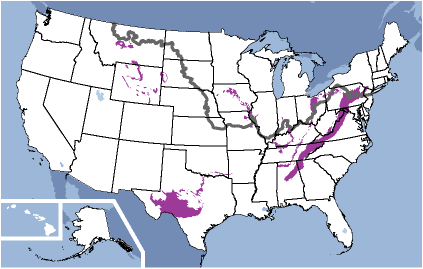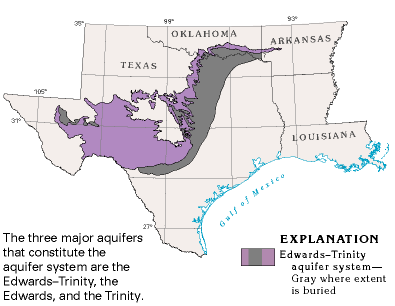Sandstone and Carbonate Rock Aquifers occur where ancient seas advanced and retreated over the same region. In scattered places in the United States, carbonate rocks are interbedded with almost equal amounts of water-yielding sandstone. In most places where these two rock types are interbedded, the carbonate rocks yield much more water than the sandstone.

An example of an important Sandstone and Carbonate Rock Aquifer is the Edwards
Trinity Aquifer in the Central Hill Country of Texas. The Edwards-Trinity aquifer system is in carbonate and clastic rocks of Cretaceous age in a 77,000-square-mile area that extends from southeastern Oklahoma to
western Texas. Well yields can vary greatly depending on the amount of development of secondary permeability in the limestone; yields from jointed and cavernous limestone can be
as much as 3,000 gallons per minute. The aquifer produces some spectacular
springs at the base of the Edwards Plateau, including the beloved Barton
Springs in Austin, Texas, where flow has ranged from a low of six million
gallons a day in 1956 to 166 million gallons a day in 1961.
